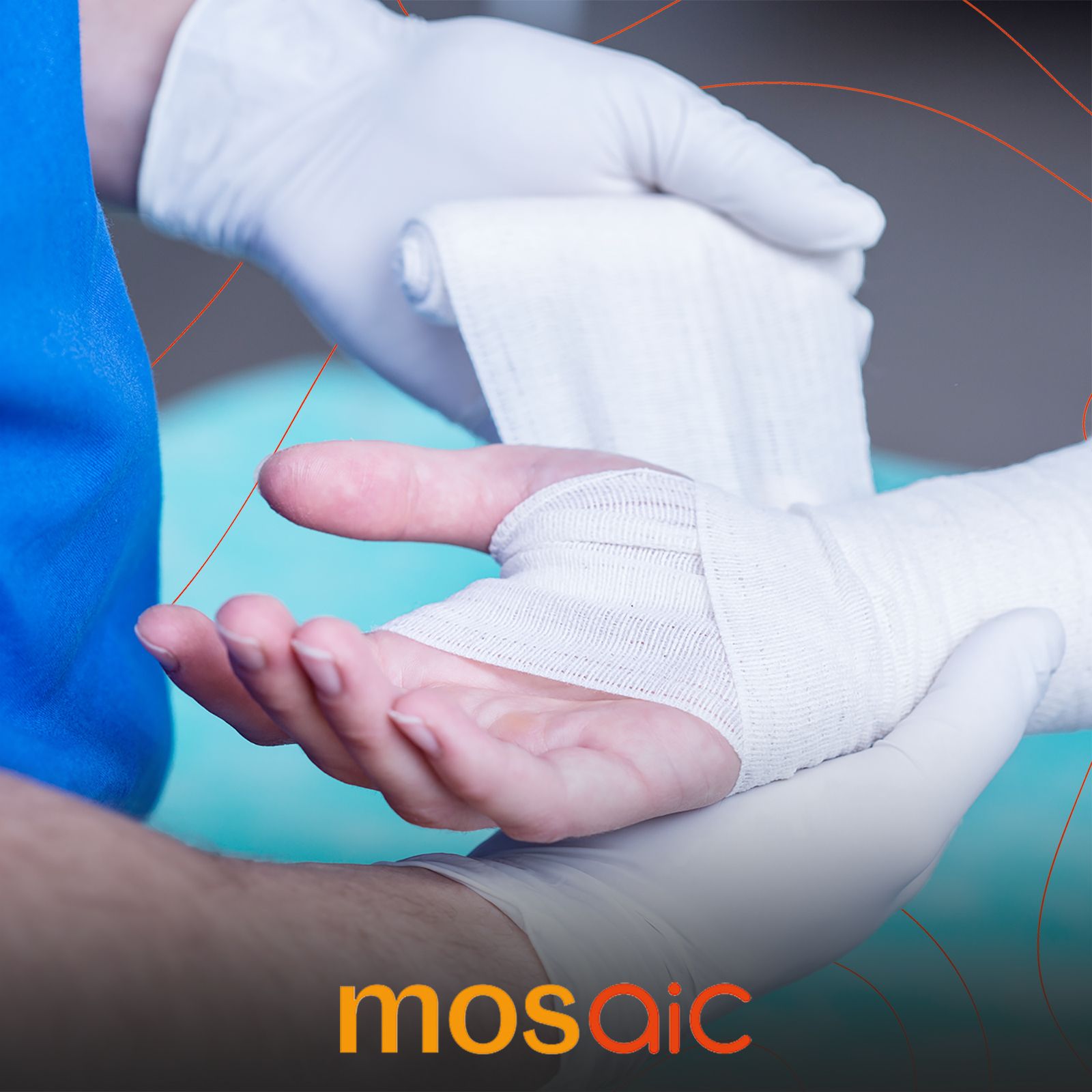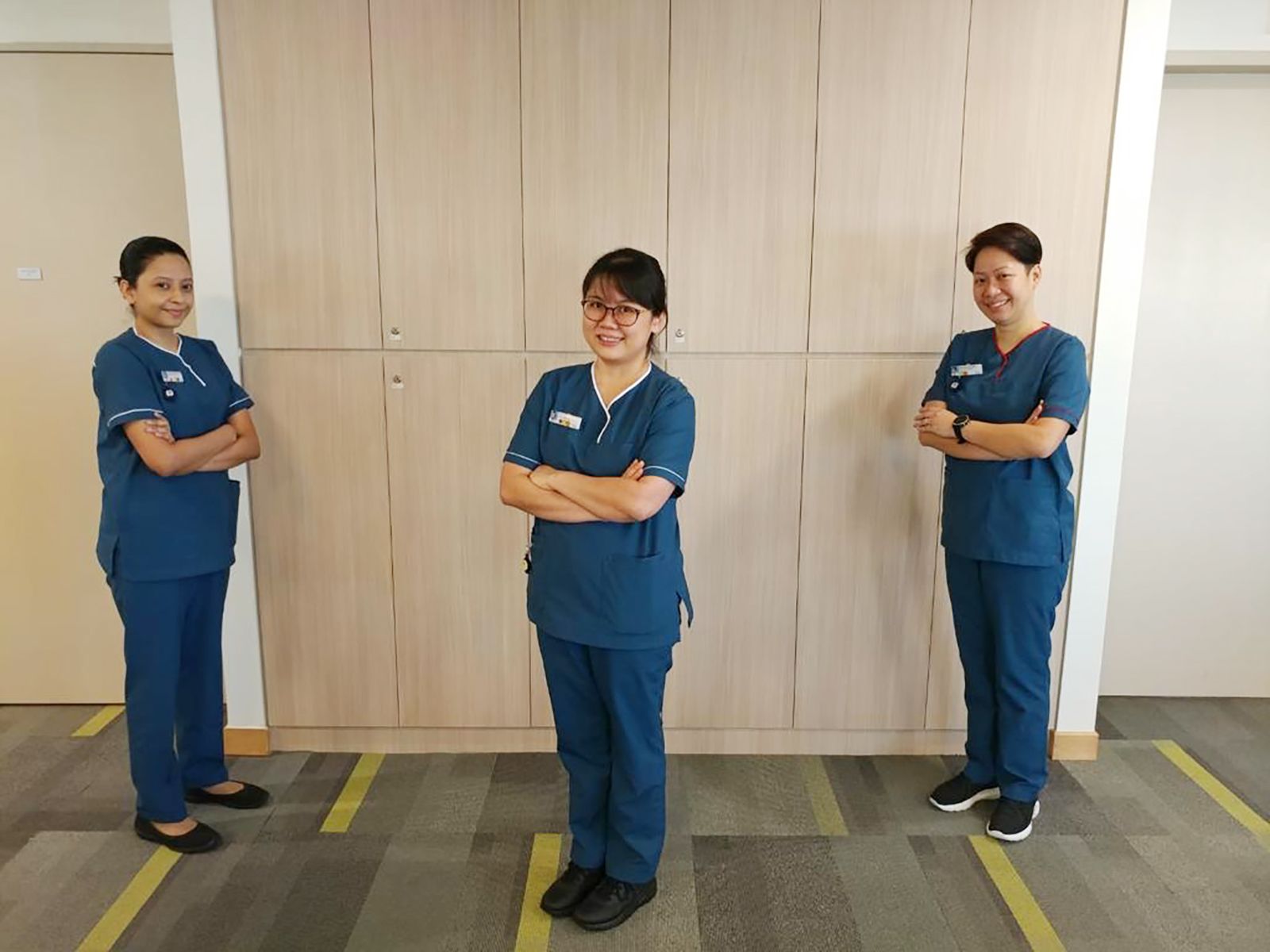How Yishun Community Hospital Improved Wound Care For Clients

Our Community Care partners are constantly striving to provide better services to seniors within the community. By improving the quality of clinical care, long-term care organizations are now able to better their patients' lives in the long term care sector. mosAIC explores how our partners improve clinical care within their organisation.
Chronic wounds is growing challenge in the healthcare sector, marked by an alarming increase of chronic wound-related admissions in hospitals. In a bid to improve the quality of wound care, Yishun Community Hospital (YCH) decided to launch an initiative to enhance their wound procedure processes and put together a team specialised in wound care.
Improving Wound Care With Technology
Chronic wounds are challenging to manage due to the build-up of infected, non-viable tissue, foreign debris, and residual material from dressings. Wound debridement is usually manually done using cleansing irrigation solution, scalpels or scissors, as precisely as possible. The process is hugely time-consuming and increases the workload of wound care nurses.
To improve their wound care processes, the specialised wound care team explored a new technology that could increase their efficiency. The Ultrasonic Assisted Wound (UAW) Debridement technology uses a cavitation effect where the ultrasonic vibrations of the instrument generate cavitation bubbles in the irrigation solution. With the biofilms disrupted by the bubbles, devitalised tissue and foreign bodies are removed from the wound bed. Evidence has shown that the low-frequency ultrasound debridement doesn't damage healthy tissues as much compared to the mechanical method of scraping dead tissue from the wound.

The specialised wound care team at Yishun Community Hospital.
Implementation Of The Ultrasonic Assisted Technology
With the implementation of the UAW machine, the specialised team's main objective was to reduce the time taken for wound cleansing and debridement, and hasten patients' wound recovery time, along with decreasing the workload of wound care nurses. To aid the implementation of the UAW machine, they made these additions to their process:
|
Steps The Team Took |
What The Team Did |
|
1. Review of Wound Data |
Analysed the data on wound care cases and indicated an increase of 27.5% of cases in the first half of 2018 as compared to 2017. |
|
2. Wound Management Training |
A team of specialised wound care nurses were selected to attend a seven-day intensive training at St Luke's Hospital to achieve Intermediate Wound Care management certification. |
|
3. UAW Training |
YCH procured a UAW machine funded by Agency for Integrated Care (AIC)’s Healthcare Productivity Fund. The team learnt to use the machine on most chronic wounds patients. |
|
4. Standard Operating Procedures for UAW Debridement |
The trained nurses prepared standard work instructions and guidelines for reference when caring for patients who require UAW debridement. A checklist of criteria on patient selection and staff protective equipment were also established. The guidelines were then shared with the ward nurses, where the document is reviewed annually to ensure that the processes are updated. |
|
5. Data Collection |
Patients who fulfilled the checklist of criteria for using Ultrasonic Assisted Debridement (UAD) were selected, and their data for wound assessment were collected and analysed. Upon analysis, the team found that the use of UAD on patients yielded a higher recovery and efficiency rate than the conventional method. |
How Yishun Community Hospital Benefitted From The Machine
The successful training and implementation of the UAW debridement procedure saw a one-third reduction of the time needed (from 30 minutes to 10 minutes) to operate. YCH saw improved staff productivity due to fewer sessions required for each patient (from eight to four sessions), which resulted in 50% of person-hour time saved. As the number of patients who switched over to UAW treatments increased, it gave nurses a higher number of person-hours saved, thus reducing overall operating costs.
Other benefits that YCH gained from this technological implementation include:
- Promotion of gentle wound cleansing and healing in patients
- Improvement in patient care experience due to the painless treatment and fast recovery
- Cost savings for patients on wound management sessions
- Boost in staff satisfaction as UAW was described as a hassle-free method of debriding wounds with minimal wound dressing wastage

Image: istockphoto
Technology Adoption For Wound Management
By providing an appropriate environment for patients to heal, wound management encompasses ongoing wound treatment with direct and indirect methods. Wound care nurses are often challenged with complex wound management, which usually requires a lot of time. However, new technology such as the UAW machine enables selected nurses to undergo intensive training on safe handling of the equipment. These nurses then adopted and applied the new method of wound debridement that increased efficiency and provided patients with painlessness during their session and enhanced wound healing after each procedure.
After successfully implementing their initiative, the team in YCH strives to do better with the consistent collection and analysis of data. Apart from ensuring that all procedures and guidelines are updated, the team also evaluates the collated data to improve every process for wound management. With the available information, the team also reviews patients' nutrition status, wound complexity, antibiotic usage, pain medication and other medical conditions to ensure holistic care.
About Yishun Community Hospital
Being one of Singapore's largest community hospitals, Yishun Community Hospital (YCH) provides intermediate care for recuperating patients who do not require the intensive services of an acute-care hospital. YCH provides an integrated care experience for all patients through a network of healthcare teams, information flow, and treatment plans.
Interested to apply for the Healthcare Productivity Fund? Email AIC at hpf@aic.sg.
